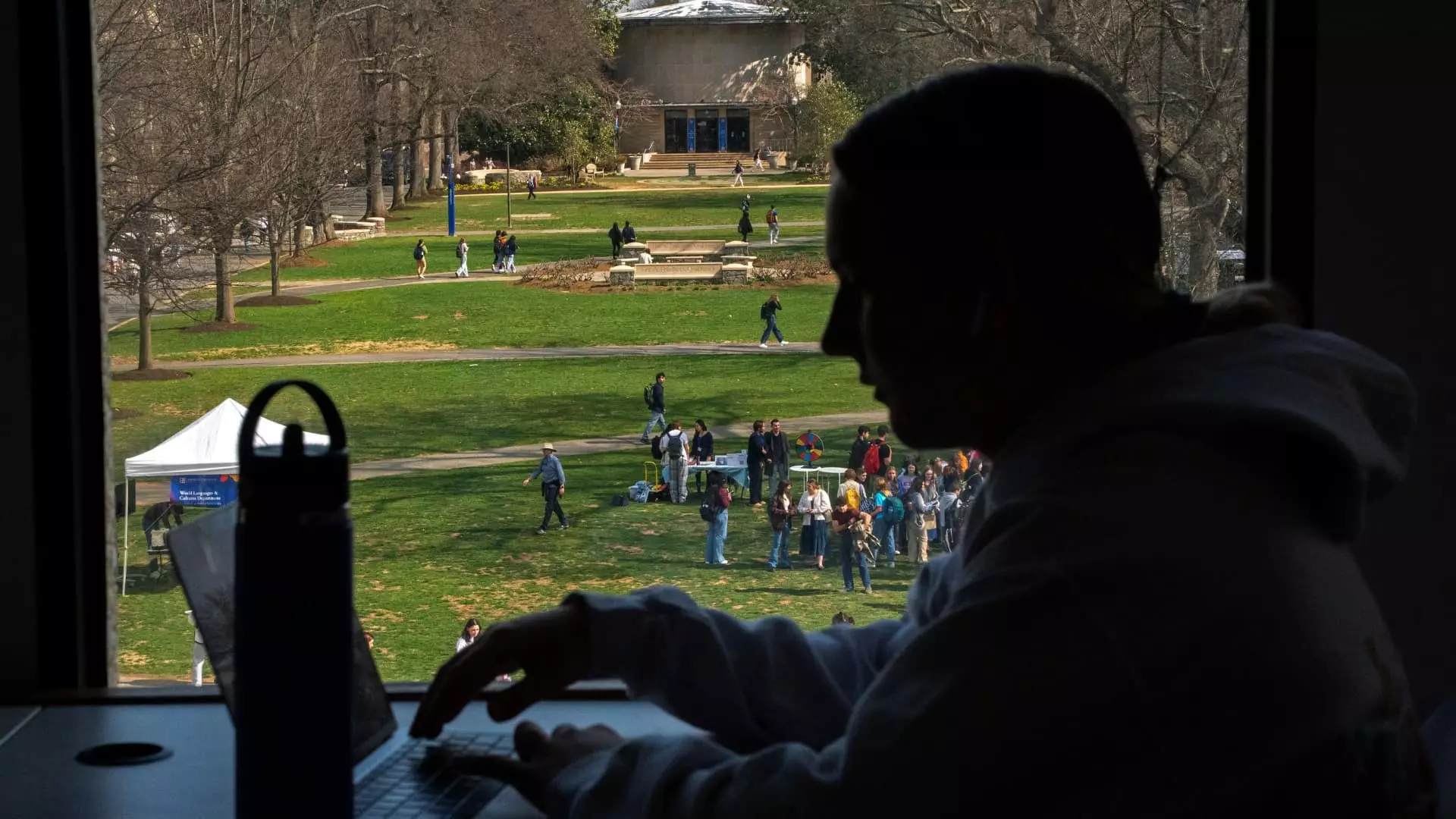As we approach 2025, a staggering 9 million student loan borrowers in the United States are bracing for potentially devastating impacts on their credit scores, a situation that many experts are calling a looming crisis. The Federal Reserve Bank of New York recently issued a stark warning: those who miss payments could witness a “significant drop” in their credit ratings. For some, this decline could peak at an alarming 171 points. This statistic serves as a chilling reminder of the precarious nature of student debt in the current economic climate and highlights the urgent need for reforms in the student loan system.
Credit scores serve as a gatekeeper for financial opportunities, influencing everything from mortgage qualifications to insurance premiums. With a range of 300 to 850, a score of 670 or above is generally viewed as acceptable. However, borrowers who have managed to maintain good credit could find themselves plunging into financial turmoil merely due to unexpected student loan delinquencies. The most alarming aspect is that this drop is disproportionately severe for those who initially had the best credit scores. Individuals already struggling financially may see an average decline of 87 points, further entrenching them in cycles of debt and proving detrimental to their long-term financial stability.
The Fallout from Pandemic Relief Expiration
This crisis could become a reality for millions because federal student loan payments had been suspended during the pandemic, creating a false sense of security for borrowers. Until September 30, 2024, many had no immediate concerns about missed payments nor the accompanying penalties that could potentially include wage garnishment or seizure of retirement benefits. As this relief period came to a close, however, a significant number of borrowers are now forced to reckon with the consequences. The transition from a grace period back to a culture of accountability is daunting, particularly for those already living paycheck to paycheck.
Financial planner Doug Boneparth emphasized that a credit score drop can restrict access to affordable financing options. Borrowers may find themselves locked in a vicious cycle: with higher borrowing costs, they are further away from achieving financial stability. This reality is disheartening in a country where education should serve as a pathway to prosperity rather than a trap of crippling debt.
Potential Paths to Financial Recovery
Despite the bleak outlook, consumer advocates suggest there are alternative strategies for borrowers to mitigate this challenge. Income-driven repayment plans allow borrowers to tether their monthly payments to their discretionary income, and some may even qualify for a payment of zero dollars. This flexibility could serve as a lifeline for those struggling to meet their financial obligations, creating an opportunity to avoid the pitfalls associated with delinquencies.
Nevertheless, even with these options available, the challenge remains complex. The Education Department has revived applications for income-driven repayment plans, but many borrowers may not be aware of them, exacerbating the likelihood of missed payments. For those who are currently in default, rehabilitating or consolidating loans can act as a viable solution to regain a current status, though understanding the requirements can be a bureaucratic minefield.
The Need for Systemic Reform
As we delve deeper into this crisis, it underscores a more profound systemic issue: the need for a re-evaluation of the student loan system itself. The burden should not fall solely on the shoulders of borrowers, many of whom are already navigating a challenging economic landscape characterized by rising inflation and stagnant wages. The current policies reflect a reactive approach rather than a proactive solution, and it could be argued that this lack of foresight has perpetuated a cycle of financial despair among the younger workforce.
As someone who identifies with center-wing liberalism, I believe it is crucial that we acknowledge the growing frustration surrounding student debt and move toward comprehensive reforms. Prevention should be prioritized, enabling borrowers to escape the shackles of their debt without the fear of damaged credit. The urgency of this crisis is undeniable, and it calls for a collective, coordinated effort to implement meaningful changes in how student loans are managed in America.
In a country that prides itself on opportunities for all, let us not forget the millions who are slowly strangled by the very systems that were supposed to elevate them. The ongoing ramifications of this impending crisis will not only affect borrowers’ credit scores but could also reverberate throughout the economy, underscoring the importance of taking immediate action to secure the livelihoods of millions.

